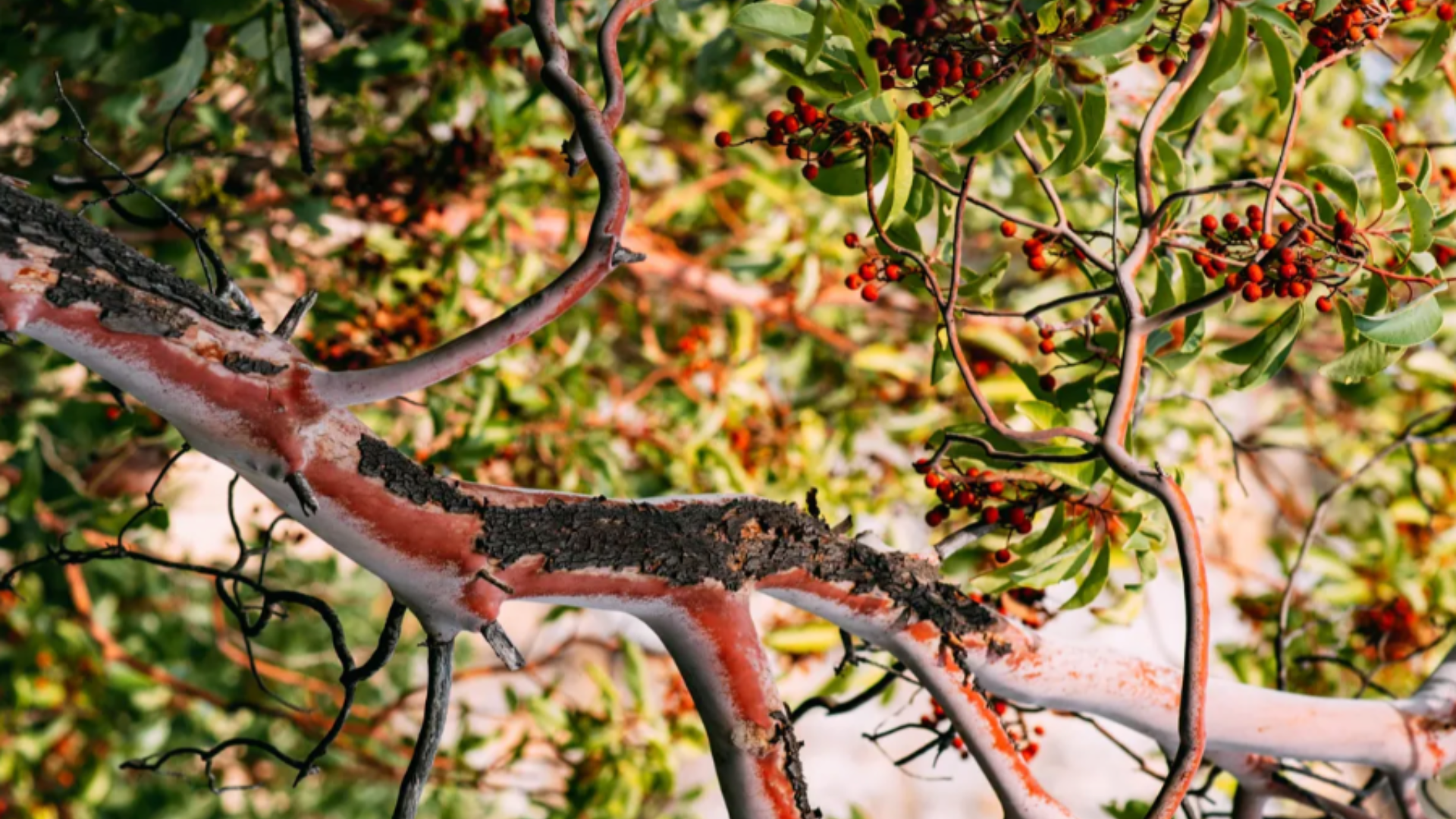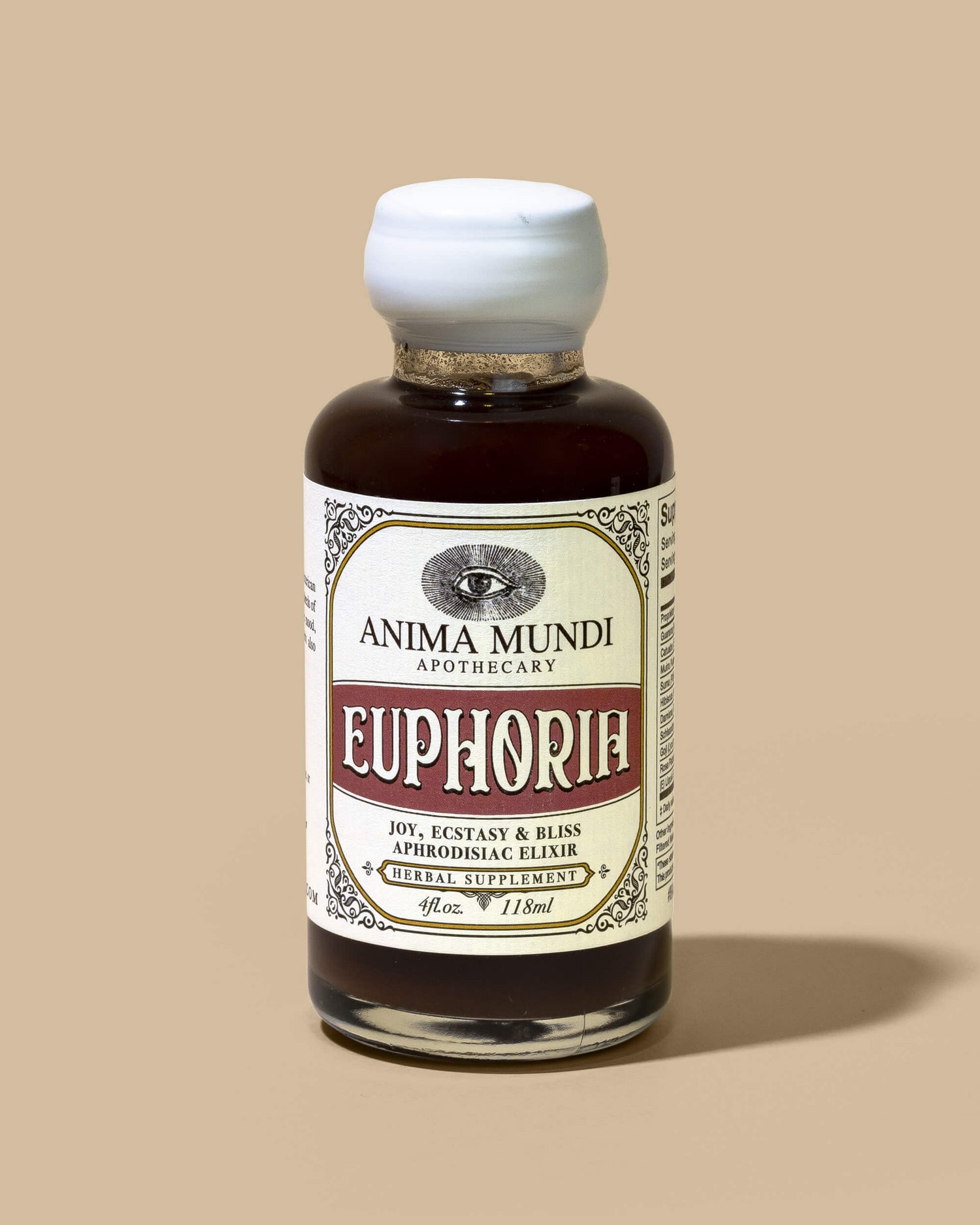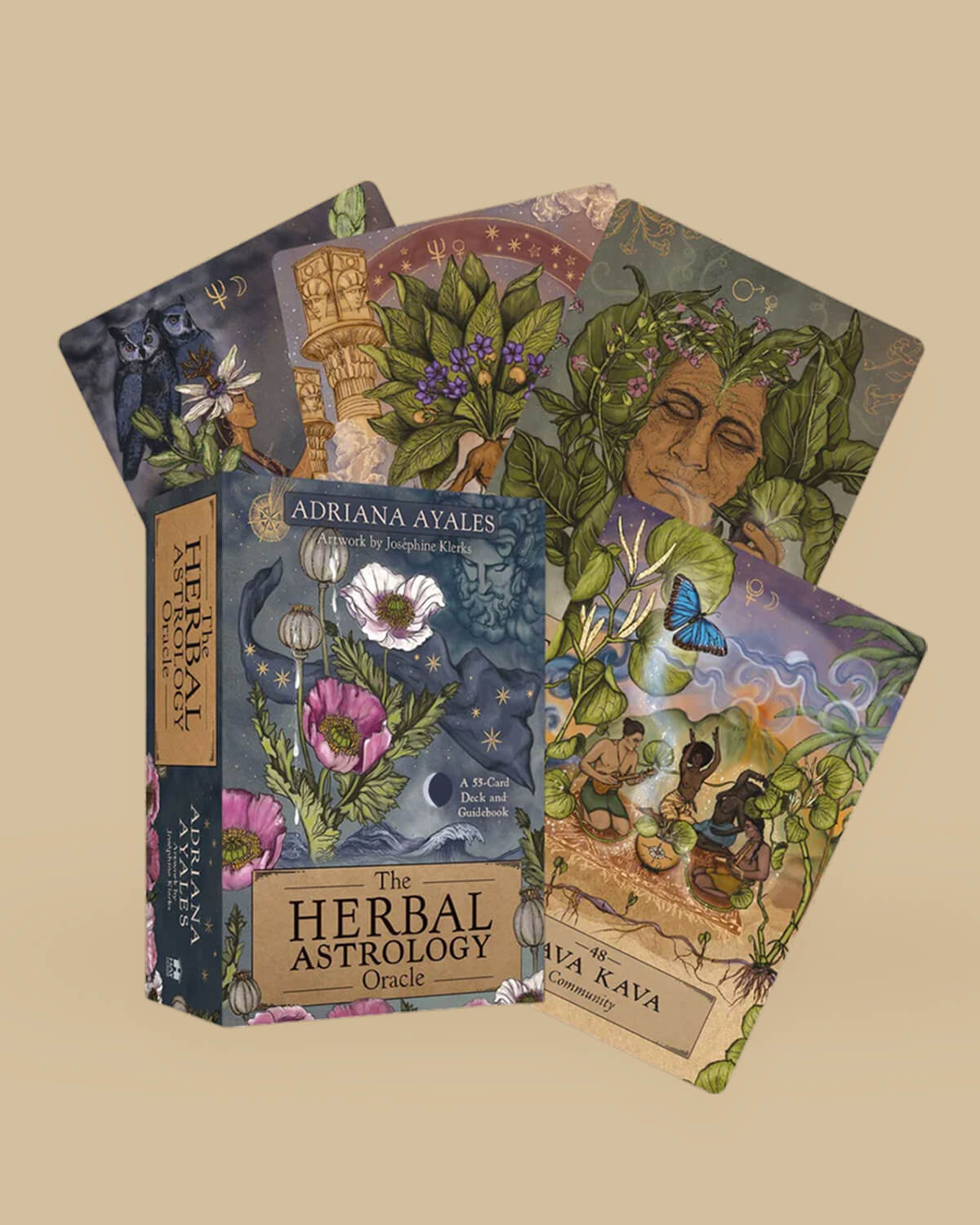“Sandalwood perfumes even the axe that hurls it down. Burn it, and it wafts its glory through the entire neighbourhood. Such is the enchanting beauty of forgiveness.”
- Chinmayananda Saraswati
No other aromatic tree has played a more central role in Asian spiritual culture, religious ceremony, perfumery, and medicine than sandalwood. If there was a single aroma that evoked spiritual devotion, remembrance of the Divine, and aspiration toward enlightenment, it would be that of sandalwood’s blue-gray smoke curling upward from the temple censer.
The scent of sandalwood is said to be the fragrance of the spiritual mind and its aura, emitted by those who have cooled the flames of passions, who are free of attachments and cravings, and who have transcended the suffering of impermanence and transitory existence. It is the fragrance of inner peace, purity of consciousness, and openness of the heart.
Healing Properties of Sandalwood
Sandalwood oil can be described as a noble fragrance that promotes emotional openness, quiets the mind, builds inner strength, helps to overcome feelings of isolation, enhances intimacy, and supports truthful communication. Sandalwood and its oil have a long history of use in ethnobotanical medicine, religious and ceremonial ritual, cosmetics, perfumery, and meditation.
Across Asia, meditation and prayer in temples and homes have been accompanied by the burning of sandalwood incense; the use of this sacred scent not only uplifts the mind with its antidepressant, anti-anxiety and euphoric powers, it also purifies the atmosphere of airborne microbial pathogens. In both traditional Chinese and Ayurvedic medicine, sandalwood as powder, tea and oil has been used for respiratory and urinary infections, for reducing inflammation and rejuvenating the skin, and for digestive problems.
The fragrance of sandalwood, burned as incense or applied as an oil, induces a state of meditative tranquility, emotional calm, mental clarity, and a serene euphoria. It promotes peaceful sleep, reduces stress and tension, calms anxiety and nervousness, pacifies irritation and anger, and frees the mind from depression and fear. It cools fevers and inflammation, stimulates and strengthens the immune system, cleanses the mucous membranes, and benefits skin diseases.
Sandalwood + Perfumery
Sandalwood oil has been used as a perfume for at least 500 years, especially in India. Traditionally, sandalwood oil was used as the base for making attars, a process in which flowers, roots, herbs and woods are hydro-distilled into a receiver containing sandalwood oil. It is now used in high-end natural perfumery as a fixative. Recent research has also confirmed that sandalwood oil massaged into the scalp can stimulate hair growth and help regrow thinning hair, in addition to reversing sun damage to skin.
Warm, sensual and woody, sandalwood oil is a favorite of perfumers as a base note. Base notes are used in perfumery to add a depth and fullness to the fragrance. Sandalwood essential oil mingles with the top and heart notes of your perfume in the first minutes of application, gradually becoming dominant; and its amazing scent can last for many hours.
In ancient times, there was often little distinction between medicinal preparations and perfumery preparations. Perfume was medicine. Deeply healing on an emotional level, supremely cooling to both the body and the mind, sandalwood oil is the epitome, even today, of perfume as medicine.
History + Sustainability of Sandalwood
Sandalwood is one of the oldest incense materials in the world, used in homes and temples for thousands of years. Over the millennia, the tree was carried from its original setting in Indonesia to China, India, Australia, and the Philippines, eventually taking its place on the world stage. Ever since, its wood and oil have been sought after, traded, and utilized for a wide range of purposes, from house-building lumber to the fixative base note of fine perfumes.
To a Balinese carver, sandalwood was a fine-grained hardwood waiting to become a statue or an elegant rosary to accompany the prayers inhaled and exhaled by those absorbed in meditation.
To a Siamese temple builder, it was an enduring wood with a calmative smell disliked by destructive insects.
To a Persian physician, it was an oil with a slightly bitter resinous taste and pronounced antiseptic and anti-inflammatory powers.
To an Indian attar maker, it was the unsurpassed base for capturing distilled floral essences.
To a noblewoman of the early Roman Empire or an aristocratic Athenian of Aristotle’s Greece, it was a viscous pale yellow treasure carried in amphoras by sail and caravan from distant shores, an unctuous delicacy with a soft, sweet, woody, and slightly animalic balsam aroma, for anointing oneself for events both social and sensual.
To a woman of a Burmese village, it was a paste (thanaka) to gently cover the face and body, bringing relief from the searing tropical heat with intricately designed patterns to adorn both children and adults.
To a Chinese herbalist, it was an ingredient of decoctions that cured hyperacidity and intestinal spasms.
To a Japanese incense maker, it was a beige-white powder, the consistency of talc, the foundation of numerous subtly nuanced recipes to be rolled into sticks and cones and sold to common householders and palace priests. 
Sandalwood Sustainability
Sandalwood trees take up to 50 years to reach full maturity, and it is from these that the essential oil is obtained from the inner wood or “heartwood”. The heartwood and the roots contain the essential oil, and a mature tree can yield up to 200 kilos of oil.
Because of its uniquely rich and smooth fragrance and potent healing properties, and because the tree must be killed in order to extract the essential oil, sandalwood has become increasingly rare and is now often obtained from areas that are over-harvested, illegally harvested, and facing ecological threat through deforestation and grazing. There is a vast amount of adulterated sandalwood oil on the market, and it is important to only purchase sandalwood that supports sustainability efforts.
At the same time, numerous agroforestry projects are supporting the sustainable growth and harvesting of this important botanical. Sandalwood from Australia is the most sustainable in the world. Large programs of sandalwood reforestation are also underway in Indonesia, Vietnam and New Caledonia, which have well controlled plantations of genuine sandalwood.
Sandalwood is one of the most lucrative forest products in the world. Although there are ecological challenges to sandalwood trees, with long term sustainable cultivation it can become a source of wealth, pleasure, and healing for future generations. Learn how our sandalwood oil is sourced here.
How To Use Sandalwood Essential Oil
Sandalwood can be applied topically as a single note perfume, used on a compress, in the bath, through direct inhalation, or a diffuser. Use a drop of oil directly on the wrist and other pulse areas, such as the neck or center of the chest as perfume.
For skin benefits, add 1-2 drops of the oil to ½ oz skin lotion, cream, or ointment.
For massage of the abdomen, chest, muscles and joints, and lymphatic drainage, sandalwood essential oil can be diluted in a base oil. A 5% dilution of sandalwood oil in a carrier oil can be used for local massage to enhance peripheral circulation and to clear airways, to promote digestion, and to relieve muscular and joint pain. It can also be massaged in a pure form (just 1-2 drops) onto the temples and the back of the neck for relaxation.
To relax and soothe the nervous system, add 2-4 drops to your bath water.
Diffuse sandalwood oil to calm and relax, to promote restful sleep, and to create a euphoric atmosphere suitable for meditation.
Sandalwood is also excellent for children. Use 1-2 drops on a pillow or applied as a single note perfume to calm, soothe, and promote a deep sleep.
Meditation Blend
- 6 drops sandalwood oil
- 8 drops frankincense oil
- 3 drops myrrh oil
- 3 drops cedarwood oil
Use the blend in a diffuser, or dilute in 1 oz jojoba oil for topical application.
Aphrodisiac Blend
- 8 drops sandalwood oil
- 2 drops jasmine oil
Can be worn undiluted as perfume, used for anointing, or added to a small amount of carrier oil for massage.
Mood Uplifting Blend
- 1 drop rose oil
- 3 drops sandalwood oil
Can be worn undiluted as perfume, used for anointing, or added to a small amount of carrier oil for massage.
Note: When diffusing sandalwood, diffusers need to be cleaned regularly, and tend to clog. More viscous oils, like sandalwood, cannot be diffused by themselves and should always be blended with thinner oils before diffusing.
9 Tips + Tools for Shadow Work
As we transition into autumn, there’s a particular spiritual potency for shadow work that cannot be ignored. Shadow work, or the process of inner alchemy, can help us work towards acceptance of the parts of ourselves we’d rather not face aims to help integrate the darker aspects of our experience and being with those we cherish most. Owning your “shadow self” (the judgmental, insecure, wounded parts of you that continue to show up until they are seen and heard) is a process that can be achieved through ritual practice and numerous other healing modalities … keep reading for some of our favorites.
Here are nine tools from our herbalists for enhancing your shadow work:
- Self-Reflection - Start by examining your thoughts, feelings, and behaviors. You can also try writing a letter to yourself, expressing love and gratitude for all aspects of your shadow self.
- Mugwort - Used since ancient times as a lucid dreaming and meditation ally, mugwort is said to enhance intuitive insight. It’s excellent for helping to clear out what no longer serves you. Plus, it can boost energy, provide digestive and immune support, purify blood, and ease stress.
- Journaling without censorship allows your shadow self to be heard. Add a dream herb like Blue Lotus to help tap into your subconscious mind and experiment with keeping a dream journal as you embark on the courageous process of meeting and understanding your shadow self.
-
Rosemary - With a long history of cleansing spaces for inner reflection and exploration, rosemary is an incredible spirit tool to consider integrating as part of your shadow work. Research also confirms that inhaling the aroma of rosemary can decrease cortisol (the stress hormone) levels.

- Inner Child Work - Past wounds and traumas are often at the root of our present shadow selves. It’s imperative to face the “core wound” (suppressed pain from childhood that becomes a behavioral pattern and protective strategy) and ancestral trauma that may be part of our DNA. While there are many ways to get in touch with and heal the inner child, like affirmations, mirror work, and consciousness exercises, some may find it helpful to seek professional guidance.
- Lavender - A beloved herb for promoting relaxation and self-acceptance, lavender can be uplifting and comforting while it is also grounding. When used regularly, it can help reduce feelings of anger, agitation, and insecurity, all byproducts of the messy shadow work process!
- Therapy - Whether talk therapy, somatic therapy, or another practice with a trained professional who specializes in mind-body health and emotional welfare, working with someone you trust can help confront the more challenging aspects of the shadow psyche. Seek support to get out of your own head and to feel less alone as you face some pretty major fears and release them.
- Meditation - Sitting in silence is a very powerful way to delve into your thoughts, emotions, and memories. Some say it can be helpful to “meet” your shadow in meditation. By asking this shadow what it wants you to know, you may get a response or observe the feeling it evokes.
- Sandalwood - The noble fragrance of inner peace, purity of consciousness and an open heart, the grounding properties of sandalwood can help us focus on the gritty task of our own shadow work. As we heal, we can find centering with this exceptional aroma for spiritual fortitude.
Remember, self-compassion and self-love are some of the foundational elements needed to begin on the journey to grounding, centering, and fully embracing our true selves, in darkness and in light. As the aura reader and psychic Mystic Michaela puts it, “Shadow work involves willfully embarking on the journey within to uncover the unhealed parts of us which our ego hides. Healing begins with recognizing.”
Sandalwood contribution by:
David Crow, L.Ac.
A renowned plant medicine pioneer, acupuncturist, Ayurvedic practitioner and aromatherapy expert, David has been a clinician, consultant, researcher, and educator for over 30 years. He has traveled extensively to study traditional medicinal systems and is the author of four books, including Plants That Heal, In Search of the Medicine Buddha, and Sacred Smoke. The co-founder and former owner of Floracopeia, David now offers consultations and serves as the Chief Aromatic Officer of Anima Mundi Herbals. Learn more about David’s work and personalized offerings here.























